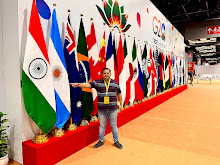NEW
DELHI, The Indian Railways has embarked on a massive technology upgradation
drive to cater to the safety and comport of passengers and cut down on travel
time, Mr Arunendra Kumar, Chairman, Railway Board, said here today while
addressing FICCI’s National Executive Committee Meeting on the eve of FICCI’s
87th Annual General Meeting on Saturday.
In
a special address on ‘A New Vision for the Indian Railways’, Mr. Kumar told
industry leaders that following the decision to open up the Railways to 100%
FDI in 10 select areas, benchmarked to global standards, the railways is
looking to large private sector investment “in areas where we want and in areas
where you want to invest.”
Mr
Kumar said that given the need to modernize the system to make the railways
people-centric, “the Indian Railways is not likely to do what it has been doing
in the past and it will come up in a business-like manner.” In this context,
the first investors meet was held on December 5 and the next is slated to be
held on the January 6, 2015.
Giving
an instance of the enormity of the investments required for high speed trains
of 300 plus kms per hour, the Railway Board chief said whilst the funds
required for laying tracks for express trains was Rs. 10 crore per km., for
high speed trains it was a whopping Rs. 100 crore. Apart from developing these,
the plans are afoot to raise the speed of exiting trains. For instance, it is
proposed to cut the travel time from Delhi to Kanpur to three hours and Kanpur
to Lucknow to one hour.
He
said that technology was being brought in every area in which the railways
operate. For the convenience of the passengers, mobile ticketing was about to
be launched shortly.
Station
development is another area that is engaging the attention of the Indian
Railways. A shopping mall concept was in the works to attract passengers who
normally arrive at the station much before the train departs. “We should be
able to see this happen at five-six locations in the next two to three years”,
he said.
Additionally,
catering of food is sought to be improved by allowing passengers to order the
menu of their choice at a particular station; apart from re-designing wagons
and locos for comfort and making them accident-resistant and easy tracking of
freight parcels.
Mr.
Kumar ar said that special efforts were being make to reduce the number of
accidents at railway crossings, 40% of which occur die to careless motorists,
by reducing the number of crossings. At present there are 11,000 unmanned
crossings and it is proposed to eliminate them altogether in the next 6 years.










0 comments:
Post a Comment